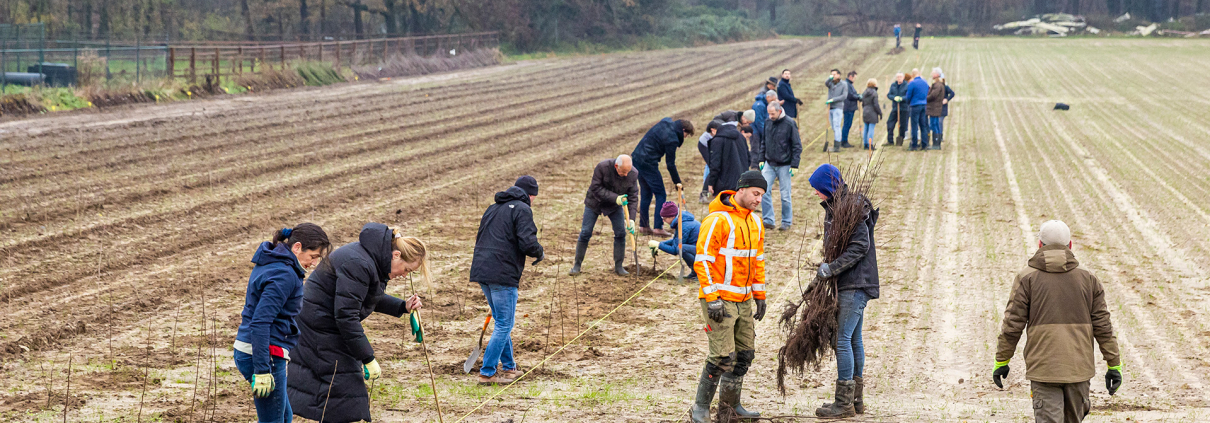Working together on a connecting forest
On Wednesday, 6th December, Canon Production Printing employees under the guidance of ‘Het Limburgs Landschap’, broke ground on forest planting. The future forest will be planted to compensate for the trees that had to be cut down for the construction of the new headquarters of Canon Production Printing on Van der Grintenstraat in Venlo.
The site where the new forest will be created is located on the southern edge of Venlo, on the Ulingsheide. The current agricultural plots of approximately 2.66 hectares in total were purchased by organisation Het Limburgs Landschap and will be given a permanent ‘forest’ designation. In total, around 5,850 trees and 7,300 shrubs will be planted. This will restore the natural connection around highway A74.
Connecting forest
In addition to the planting of forests, this forest compensation realizes an important goal of The Limburg Landscape. Jan Leunissen, Project Leader at the site management organization: “Through a constructive collaboration with Canon Production Printing and the Province of Limburg, we can start a nature connection between two Venlo nature reserves, Het Jammerdal and De Groote Heide, in the context of forest compensation. By applying forest compensation in places where it is really useful, like here as an important connecting zone, we can make nature stronger and thus increase biodiversity. The forest is designed exclusively as a forest and nature reserve, with dense forest edges on the outside and semi-open nature in the middle with room for flower-rich grassland and heath land.”
“Canon Production Printing Netherlands has set up a nature compensation with the province since the use of the former camping site ‘Ons Buiten’. As a donor, we contribute to this possibility of compensation within the municipality, and we are very enthusiastic that a beautiful place has been found by Het Limburgs Landschap that restores a piece of nature.” Eve Ernsting, board member of Canon Production Printing Nederland B.V.
From the first year of planting, the young forest is particularly interesting for insects and birds and will be more mature in about 10 years.








